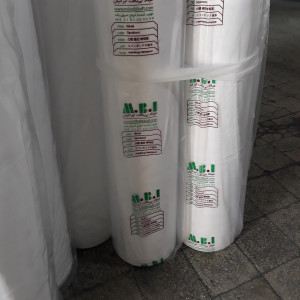| Milad Parnia Iranian |

| No Title | 0.01 MB |
| Registration Date | 27 Oct 2020 |
| Revision Date | 27 Oct 2020 |
| Share |
Textile Fibers, Yarns, and Fabrics
FabricNanoparticles are a powerful antimicrobial agent that can kill a wide range of microbes. The antibacterial effect increases dramatically in the nanometer dimension, as they are able to kill more than 650 types of bacteria. Antibacterial activity is an indicator of the ability of the product to kill bacteria in contact with it, which is obtained by the logarithmic comparison of the number of bacteria on the control sample and the product sample after 24 hours of contact with the bacteria. According to the standard, the effect is significant when the antibacterial activity of the product is between 2 and 3; if the antibacterial activity is more than 3, it has a strong effect. Based on antibacterial and antifungal tests, the fabric used in the production of the company’s spunbond fabric has the ability to kill bacteria such as Klebsiella Pneumoniae and S.Aureus. The “antibacterial activity” of this product is in accordance with INSO 11070 standard.
Nonwoven fabrics are a type of fabric in which the separated fibers are spun in a spidery or straight and parallel or random manner, and bonding operations are performed on them. Fiber bonding is done by methods such as needling machines or using chemical bonding. The nonwovens now make up 30% of the world’s textiles. One of the most common types of these textiles is felt. Masks, pads, bituminous waterproofing, various types of insulation, and wallpaper are types of the nonwoven textiles.
One of the types of the nonwoven fabric is spunbond, which is made of polypropylene and is also known as disposable or nonwoven fabric. This fabric is made in different thicknesses and weights and it has many applications such as tea bags, cloth handbags, industrial filters, and packaging and cover industries.
Spunbond has high recyclability and production speed and is usually produced in one to three layers. Also, a four-layered spunbond is usually called SSSS or SMS. This type of spunbond prevents the penetration of bacteria and various microbes.
Textiles produced from spunbond are discarded after consumption, and due to the widespread use of these textiles in industrial applications, it is possible to transfer microbes and contaminants out of the place of consumption by this type of fabric. The use of nanoparticles in the internal structure of spunbond leads to its antibacterial properties and allows it to be used in everyday applications in contact with microbes.